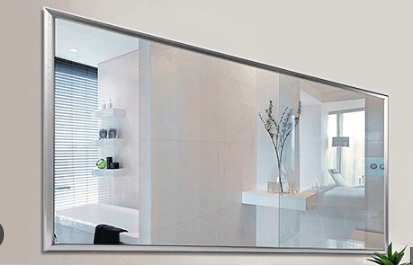Aluminum mirror for space telescope: Advantages, Design, and Applications

Aluminum mirrors play a vital role in the design and functionality of space telescopes, offering unique benefits that make them a popular choice for space-based optical systems. This article explores the advantages of aluminum mirror for space telescope their design considerations, and their impact on space-based observations and research.
What Are Aluminum mirror for space telescope?
Aluminum mirror for space telescope are optical mirrors made from aluminum or coated with aluminum, specifically designed to function in the harsh environment of space. These mirrors are essential for gathering and focusing light from celestial objects, enabling space telescopes to capture detailed images and data from beyond Earth’s atmosphere.
Key Features of Aluminum mirror for space telescope
- High Reflectivity: Aluminum mirrors are coated with a thin layer of aluminum that provides high reflectivity across a wide range of wavelengths, including visible, ultraviolet (UV), and infrared (IR) light. This ensures efficient light collection and high-quality imaging.
- Lightweight Construction: Aluminum is known for its low density, making these mirrors lightweight. This is crucial for space telescopes, where minimizing weight is essential to reduce launch costs and facilitate precise positioning.
- Cost-Effectiveness: Compared to other materials, aluminum is relatively affordable, making it an economical choice for large-scale space telescope projects.
- Durability: Aluminum mirrors are durable and resistant to the harsh conditions of space, including extreme temperatures and radiation. Protective coatings enhance their longevity and performance.
Design Considerations for Aluminum Mirrors in Space Telescopes
Designing aluminum mirror for space telescope involves several critical considerations to ensure optimal performance and reliability:
1. Reflective Coating
- Aluminum Coating: A high-quality aluminum coating is applied to the mirror to provide excellent reflectivity. This coating is typically deposited using techniques such as sputtering or evaporation to ensure a uniform layer.
- Protective Coatings: To protect the aluminum from degradation due to space environment factors, additional coatings may be applied. These can include dielectric coatings that enhance reflectivity and protect against radiation damage.
2. Thermal Management
- Thermal Expansion: Aluminum has a high coefficient of thermal expansion, which can affect mirror performance in the extreme temperature variations of space. To mitigate this, careful thermal management and design are employed to maintain the mirror’s shape and alignment.
- Heat Shielding: Space telescopes often incorporate heat shielding and thermal control systems to manage the temperature of the mirror and prevent thermal distortion.
3. Optical Quality
- Polishing and Finishing: The mirror’s surface must be precisely polished to achieve the desired optical quality. Any imperfections can affect the image quality and performance of the space telescope.
- Alignment: Accurate alignment and calibration are crucial to ensure that the mirror focuses light correctly and produces sharp, detailed images.
Read also: Maximizing Profitability: Financial Management Strategies for Small Businesses
Advantages of Aluminum mirror for space telescope
Aluminum mirrors offer several advantages for space telescopes, making them a preferred choice for many space missions:
1. High Reflectivity Across Wavelengths
Aluminum mirrors provide excellent reflectivity over a broad wavelength range, which is essential for capturing detailed images of celestial objects across different spectra. This versatility is crucial for a variety of scientific observations.
2. Lightweight Design
The lightweight nature of aluminum mirrors reduces the overall weight of the space telescope, which is critical for minimizing launch costs and ensuring precise positioning and stability in space.
3. Cost-Effectiveness
Aluminum is a cost-effective material compared to alternatives such as silver or gold. This affordability makes it an attractive option for both large and small-scale space telescope projects.
4. Durability and Longevity
With the right protective coatings, aluminum mirrors are resistant to the harsh conditions of space, including radiation and temperature extremes. This durability ensures a long service life and reliable performance.
Applications of Aluminum Mirrors in Space Telescopes
Aluminum mirrors are used in various space telescope applications, contributing to significant advancements in astronomical observations and research:
1. Deep-Space Observations
- Hubble Space Telescope: The Hubble Space Telescope employs aluminum mirrors to capture high-resolution images of distant galaxies, nebulae, and other celestial objects. The mirrors are crucial for studying the structure and evolution of the universe.
2. Exoplanet Discovery
- Kepler Space Telescope: Aluminum mirrors in the Kepler Space Telescope were used to detect exoplanets by observing the dimming of stars as planets passed in front of them. The mirrors played a key role in identifying potential habitable planets.
3. Cosmic Microwave Background Research
- Planck Satellite: The Planck satellite used aluminum mirrors to study the cosmic microwave background radiation, providing valuable insights into the early universe and the formation of galaxies.
4. Earth Observation
- Earth-Observing Satellites: Some space telescopes with aluminum mirrors are designed for Earth observation, providing data on climate change, environmental monitoring, and natural disasters.
Challenges and Considerations
Despite their advantages, there are challenges associated with using aluminum mirror for space telescope:
- Thermal Expansion: Managing thermal expansion and maintaining mirror alignment in the extreme temperature variations of space can be challenging.
- Coating Degradation: Over time, protective coatings may degrade due to space radiation, requiring careful selection and maintenance of coating materials.
The Future of Aluminum mirror for space telescope
The future of aluminum mirror for space telescope is promising, with ongoing advancements in materials science and coating technologies. Innovations are expected to enhance the performance, durability, and cost-effectiveness of aluminum mirrors, expanding their applications in space exploration and research.
Conclusion
Aluminum mirrors are a critical component in the design and functionality of space telescopes, offering high reflectivity, lightweight construction, and cost-effectiveness. The manufacturing process involves careful consideration of reflective coatings, thermal management, and optical quality to ensure optimal performance in the challenging environment of space.
From deep-space observations to exoplanet discovery and cosmic research, aluminum mirrors contribute significantly to our understanding of the universe. As technology advances, aluminum mirrors will continue to play a vital role in space exploration, driving innovations and discoveries in astronomy and beyond.




